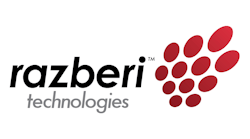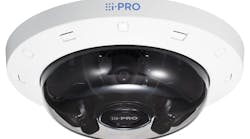The distinction between phones, watches, tablets, cameras, glasses and PCs continue to blur in the consumer world, as companies race toward providing smaller, more intelligent devices where content can be created, viewed or shared.
Many of these devices and technologies sold into households eventually make their way into the video security realm. Most people enjoy an occasional visit to the theater to watch the latest movies captured in 4K video, or wait until they become available to stream via the various content providers from satellite, cable or Internet.
The basis for well-made videos is the same —whether for filmmakers or for the video surveillance industry. An ideal setting includes good lighting, interesting subject matter, proper distance and contrast, in-focus content without distortion and little to no noise or noticeable visual artifacts. Unlike movies that are filmed in pre-staged, environmentally-friendly settings for lighting, movement and scenes, video from 4K security cameras need to be capable of capturing information as it unfolds without the benefit of directors, producers and stage handlers.
Fortunately, several video surveillance manufacturers are now offering this video resolution, which only recently was solely available to star-crazed audiences. As 4K continues to creep into the everyday lives of consumers and video surveillance applications, integrators must evaluate how to leverage the advanced technology to achieve optimal results.
The Rise of 4K
By most definitions 4K delivers imagery that is four times the overall quality of high definition (1080), and about 24 times the quality of standard definition. This allows for a greater level of detail that can be zoomed in or focused on for various security needs. This level of precision provides security professionals with the ability to focus more on the clarity of individuals, items or objects from greater distances while using less cameras and subsequently introducing more cost savings.
Many manufacturers provide ways to zoom into regions of interest without losing out on the larger 4K imagery, while others allow for the dividing of the image into individual video streams for easier recognition and better handling of these potentially large displays.
Of course the intent is to provide more actionable video, by enabling users to select regions of interest. Analytics can then be introduced for automatic tracking of persons or objects across an entire scene. When platforms can proactively alert personnel through special planning and configuration it becomes that much more useful.
Taken as a whole, more data is only as good as the ability and means to locate it, thus making accessibility and the flow to and from the information source equally important as the actual content itself. Higher video resolutions are of no use to anyone if they cannot be transmitted and/or received by designated individuals or locations for viewing and/or recording.
4K Deployment Hurdles
It is therefore imperative that the factors that impact 4k deployment strategies are recognized: administration, bandwidth, storage, power, encoding/decoding of video, IP addressing, number of devices, number of end-users, physical dimensions, locations, infrastructure and cybersecurity.
Traditional IP video solutions where cameras are dotted across an installation and then streamline back to a central location for storage, backup and viewing have a certain familiar appeal. This centralized approach is a similar one used for email, file sharing and other day-to-day activities of information technology; however, the drawback in using this traditional method is that it is bandwidth-intensive, high on IP addressing (1:1) and requires other more costly considerations to limit the risk of lost video since everything needs to go to a central location.
Due to these factors, some would advocate dedicating independent networks or systems, reducing resolution or frame rate, other quality adjustments or also reducing the number of 4K cameras in order to make a solution viable. Others would dismiss these new applications simply due to lack of understanding or perceived complexity.
The Alternative: Intelligent Surveillance Appliances
Another method is to use agnostic ServerSwitch appliances that are installed in a distributed manner (IDF closets, floors, buildings, etc.). This method of installation has many benefits over the traditional centralized approach to video recording.
In a distributed architecture, appliances record closer to the edge of the surveillance network, near the cameras. IP cameras are connected directly to the appliance so video only streams over the network when it is retrieved on-demand or in the event of an incident.
An intelligent surveillance appliance not only takes the burden off the network by up to 95 percent, but also increases the reliability of the video by disassociating the surveillance video recording from conditions that can affect the health of the network such as network congestion or network outages. Video continues to record when the network goes down, and there are fewer single points of failure.
General-purpose IT systems typically require an IP address for every camera or component, which is not easily scalable or sustainable. Intelligent appliances can reduce complexity by eliminating the need for proliferating IP addresses for each camera on a 1:1 basis. A surveillance appliance requires only one IP address from the core network and can accommodate up to 24 cameras with one appliance IP address — reducing costs while improving network security.
An intelligent surveillance appliance provides health monitoring of the entire ecosystem including the server, switch, storage, PoE and cameras. Health monitoring enables greater visibility and control. It also includes proactive event management and notification 24/7 via text message or other communication method in the event of an issue. Monitoring of system health is key to lowering the risk of video loss and unusable evidence.
Network Security
Protection against cyberattacks can include dedicated camera networks, 802.1x and MAC address binding (or port security) are all options to help secure the network and they should be considered, but they can be complex to set up and maintain.
An intelligent surveillance appliance includes a cybersecurity protection mechanism as a priority. The integrator can lock down camera ports on a switch with a single click to prevent hackers from gaining access to the surveillance system and ultimately to the corporate network itself. If a device with a different MAC ID address is plugged into the camera or access port, it cannot gain entry into the network and will be locked out. The intelligent appliance also provides a web-based interface to unlock ports for maintenance and camera changes.
Mig Paredes is the director of sales for Latin America for Razberi Technologies. Request more info about the company at www.securityinfowatch.com/11702798.



